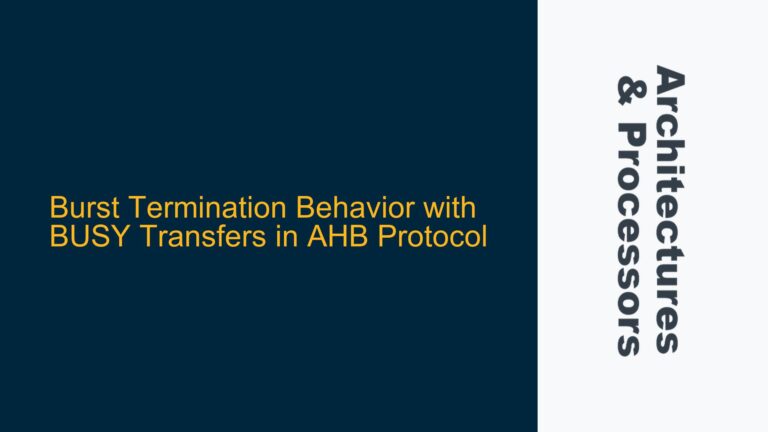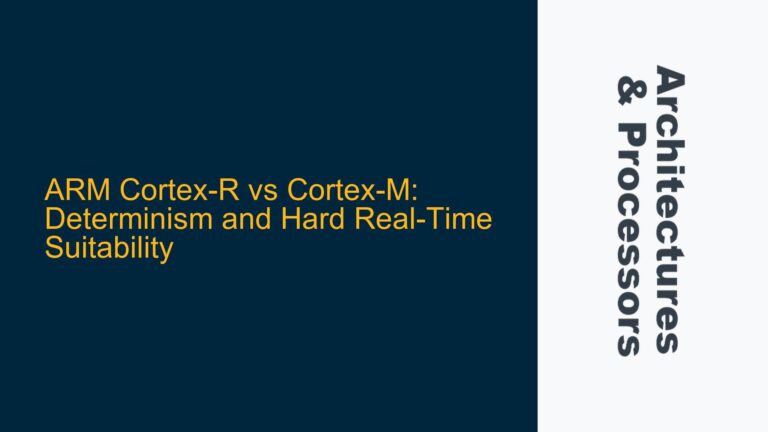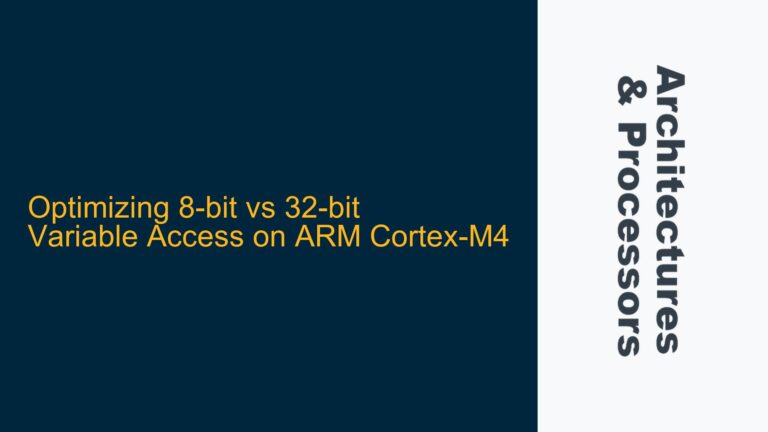Cortex-A78 NEON Instruction Pipeline Concurrency and Execution Timing
The Cortex-A78 is a high-performance ARM processor core designed for advanced applications requiring significant computational power. One of its key features is the Advanced SIMD (NEON) engine, which accelerates vectorized operations. Understanding the timing and concurrency of NEON instructions is critical for optimizing performance, especially in scenarios where multiple vector operations are executed in sequence. This analysis delves into the specifics of NEON instruction execution on the Cortex-A78, focusing on pipeline concurrency, instruction timing, and the implications for code optimization.
NEON Pipeline Architecture and Execution Units
The Cortex-A78 features two 128-bit NEON execution pipelines, referred to as Pipeline V0 and Pipeline V1. These pipelines are designed to handle vector operations concurrently, enabling the processor to execute multiple NEON instructions in parallel. Each pipeline can process 128-bit vector operations, but they can also handle smaller vector sizes, such as 64-bit operations, by packing multiple operations into the same pipeline.
The NEON engine supports a wide range of vector operations, including arithmetic, logical, and data movement instructions. The timing and concurrency of these operations depend on several factors, including the type of instruction, the size of the vectors, and the availability of execution units. For example, the ABS (Absolute Value) instruction, which is used in the provided examples, is a common NEON operation that can be executed concurrently on both pipelines.
Example 1: 128-bit ABS Operations and Pipeline Concurrency
In the first example, the following sequence of 128-bit ABS operations is executed:
ABS V31.2D, V0.2D /* Pipeline V0 */
ABS V30.2D, V1.2D /* Pipeline V1 */
ABS V29.2D, V2.2D /* Pipeline V0 */
ABS V28.2D, V2.2D /* Pipeline V1 */
The assumption here is that the first and third instructions are executed on Pipeline V0, while the second and fourth instructions are executed on Pipeline V1. Given the Cortex-A78’s dual-pipeline architecture, it is reasonable to expect that the first and second instructions can be executed concurrently in a single clock cycle, followed by the concurrent execution of the third and fourth instructions in the next clock cycle. This would result in a total execution time of two clock cycles for the entire sequence.
However, this assumption depends on several factors, including the availability of execution units, the absence of pipeline stalls, and the correct scheduling of instructions. The Cortex-A78’s instruction scheduler is designed to maximize concurrency by distributing instructions across the available pipelines, but it must also account for dependencies and resource conflicts. In this case, since the ABS instructions are independent and operate on different registers, the scheduler can effectively distribute them across the pipelines, achieving the expected concurrency.
Example 2: 64-bit ABS Operations and Execution Throughput
The second example involves a sequence of 64-bit ABS operations:
ABS V16.2S, V3.2S /* Pipeline V0 */
ABS V15.2S, V3.2S /* Pipeline V1 */
ABS V14.2S, V3.2S /* Pipeline V0 */
ABS V14.2S, V3.2S /* Pipeline V1 */
In this case, the question is whether the Cortex-A78 can execute four 64-bit NEON instructions in a single clock cycle. Given that each NEON pipeline is 128 bits wide, it is theoretically possible to pack two 64-bit operations into each pipeline, allowing for the concurrent execution of four 64-bit operations in a single clock cycle.
However, this depends on the specific implementation of the NEON engine and the instruction scheduler. The Cortex-A78’s NEON engine is designed to handle multiple smaller operations within a single pipeline, but the actual throughput may be limited by factors such as instruction decoding, register file access, and pipeline latency. Additionally, the instruction scheduler must ensure that there are no dependencies or resource conflicts that could prevent the concurrent execution of the instructions.
Potential Bottlenecks and Optimization Considerations
While the Cortex-A78’s NEON engine is highly capable, there are several potential bottlenecks that can affect the timing and concurrency of NEON instructions. These include:
-
Pipeline Stalls: Pipeline stalls can occur due to dependencies between instructions, resource conflicts, or cache misses. For example, if an instruction depends on the result of a previous instruction, the pipeline may stall until the result is available. This can reduce the effective concurrency of the NEON pipelines.
-
Instruction Decoding and Scheduling: The Cortex-A78’s instruction decoder and scheduler must efficiently distribute instructions across the available pipelines. If the decoder or scheduler is unable to keep up with the instruction stream, it can limit the concurrency of the NEON engine.
-
Register File Access: The NEON engine relies on the register file to store and retrieve vector operands. If multiple instructions attempt to access the same register file ports simultaneously, it can create contention and reduce the effective throughput of the NEON engine.
-
Cache and Memory Bandwidth: NEON operations often involve large datasets, which must be loaded from and stored to memory. If the cache or memory bandwidth is insufficient, it can create a bottleneck that limits the performance of the NEON engine.
Optimizing NEON Code for Cortex-A78
To maximize the performance of NEON code on the Cortex-A78, developers should consider the following optimization strategies:
-
Minimize Pipeline Stalls: Avoid dependencies between instructions by reordering instructions or using independent registers. This allows the instruction scheduler to distribute instructions across the pipelines more effectively.
-
Maximize Instruction-Level Parallelism: Use multiple independent NEON operations within the same loop iteration to increase the concurrency of the NEON pipelines. This can be achieved by unrolling loops or using vectorized operations.
-
Optimize Memory Access Patterns: Ensure that memory accesses are aligned and sequential to minimize cache misses and maximize memory bandwidth. Use prefetching to load data into the cache before it is needed.
-
Use Appropriate Vector Sizes: Choose the appropriate vector size for the operation to maximize the utilization of the NEON pipelines. For example, using 128-bit operations can fully utilize the pipelines, while smaller operations may require additional packing or unpacking.
-
Profile and Analyze Performance: Use performance profiling tools to identify bottlenecks and optimize the most critical sections of the code. The Cortex-A78 software optimization guide provides detailed information on the performance characteristics of NEON instructions and can be used to guide optimization efforts.
Conclusion
The Cortex-A78’s NEON engine is a powerful tool for accelerating vectorized operations, but achieving optimal performance requires a deep understanding of the pipeline architecture, instruction timing, and potential bottlenecks. By carefully analyzing the concurrency and timing of NEON instructions, developers can optimize their code to fully utilize the capabilities of the Cortex-A78 and achieve the highest possible performance. The examples provided illustrate the importance of considering pipeline concurrency, instruction scheduling, and memory access patterns when optimizing NEON code for the Cortex-A78. With the right optimization strategies, developers can unlock the full potential of the Cortex-A78’s NEON engine and achieve significant performance improvements in their applications.






